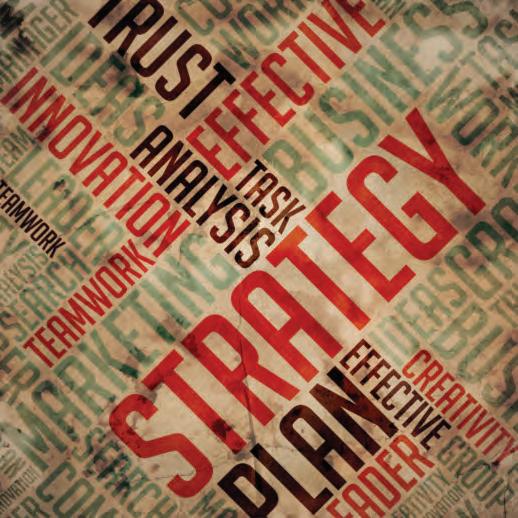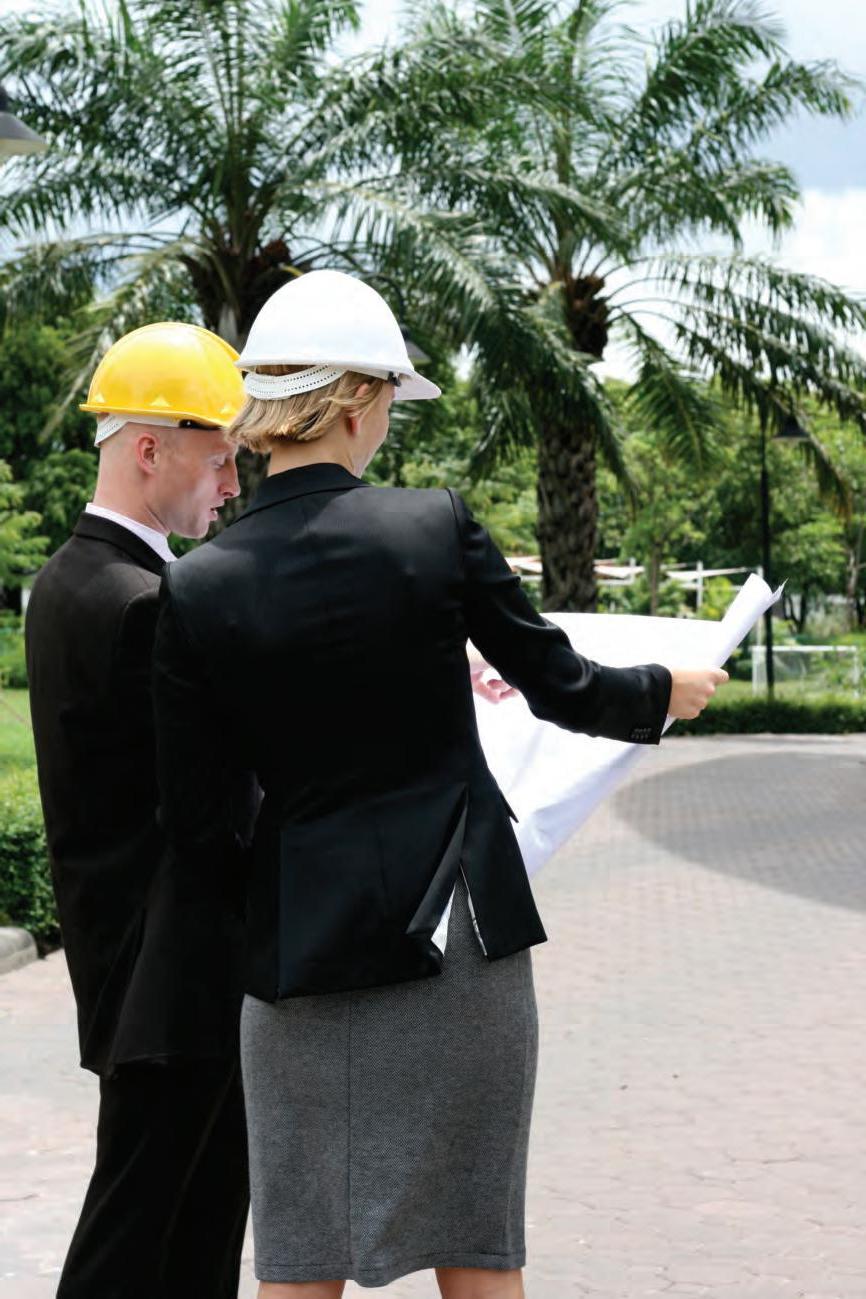
23 minute read
From the Roundtable
It is with great pleasure that I am able to address you one last time and introduce you to the 2015 CACM Board of Directors. All CACM manager members had the opportunity to vote in the annual election last December, and as a result, the Board welcomed two new members – Robb Etnyre, CCAM and Amber Nelson, CCAM – and reinstated three incumbents, including John Cligny, CCAM, Phyllis Harkins, CCAM, and myself. I am honored to be able to serve the CACM membership for another term.
During our January board meeting, which was held just before the Annual Meeting of the membership in Oakland, we also selected new officers to lead us through a successful 2015. Please join me in congratulating Gordon Goetz, CCAM, your new Board Chair. Gordon has a long history of service: He has been a part of the CACM Board for a total of 10 years and has had great success in the past as the Chair from 2011-2012 and Vice Chair in 2014. I couldn’t be happier to pass the torch to him again.
Gordon will be supported by Vice Chair Kathryn Henricksen, CCAM and Secretary René Decker, CCAM, as well as 10 other dedicated industry professionals on the 2015 Board (see page 51 to view all board members).
I want to thank those board members who left our team at the end of 2014: Jacqueline Dynes, CCAM and Cherié McColley, CCAM. We greatly appreciate your years of service and the insight and professionalism you have shared with us, which has helped us create a strategic direction for CACM and its members.
Moving forward, be confident in the fact that you have a strong group of board members in your corner who are prepped and ready to ensure CACM continues to create opportunities for you to grow professionally. Our goals will remain the same in 2015 as in years past: promoting your professional success and optimizing the benefits you receive as a member of CACM. We are here for you, and we all look forward to continuing an open dialogue with you about how CACM can meet your professional needs.
Here’s to a great year ahead!
On behalf of the CACM Board, Melinda Young, CCAM, PCAM Immediate Past Board Chair
SETTING THE Specialty
RECORD STRAIGHT
It probably comes as no surprise that many people don’t understand what we
as community managers do for a living. Oftentimes people refer to those who manage homeowners associations generally as “property managers,” “apartment managers” or “facilities managers.” If you really want to confuse the layperson, all you need to do is inform them that there are many specialties within the community management field, from active adult, to portfolio, to high rise community management.
With so many areas to specialize in, it may be that you too aren’t entirely clear on how each facet of the
industry intersects and how the community manager’s r ole shifts to meet the unique demands of different community types. The Vision Editorial Committee
has interviewed managers in six different specialties to give you a better idea of the perks, challenges and idiosyncrasies of each area of expertise. From there, you make the call which specialty is the right pursuit for
you.
HIGH RISE
Community Management

BY DEAN JACKSON, CCAM-HR
patricia Klock, CCAM-HR is the General Manager of Opera Plaza Master Owners and Opera Plaza Residential Homeowners Association, a mixeduse high rise in San Francisco. She has been in the HOA industry for 28 years and at Opera
Plaza for 16. “I was managing a mid-rise association and I applied for the job at Opera Plaza. I had been managing mid-rise associations and PUDs,” she says. “High rise differs from those in that there are no issues regarding lawn signage or ornaments, junk cars on lawns. There are fewer pets and parking issues.”
Though Patricia says there really isn’t a “typical” day, she did provide a window into what she might tackle in any given day. “I generally come into the office, review the security reports, because those will set the tone of my day,” she says. “I check and answer emails and mail. I have a daily meeting with my facilities manager. I walk the property, check in with the commercial manager and security account manager, and address issues as they arise. Since we do the accounts payables and receivables in the office, I spend the later part of the day doing the financial aspect of my job, when there are fewer interruptions.”
Patricia generally attends six meetings per year, plus an annual meeting. Her board’s adoption of Policy Governance has streamlined the meetings, which typically attract 10 members – usually half senior residents and half new residents. “There aren’t a lot of recurring issues that come up at meetings, as the board practices Policy Governance, where their decisions are resolutions dealing with financial investments and major project funding management, and not the day-to-day operations.”
Customer service is the name of the game in community management, though it can be handled in many different ways. At Opera Plaza, Patricia says they outsource a concierge service, which handles packages and key holding for the association, as well as provides referrals for housekeepers, laundry service and handymen. “Our staff members are first responders, addressing issues such as backed-up sinks and smoke alarms and do referrals of plumbers or electricians” she says. Opera Plaza also employs an assistant manager, a clerical assistant one day a week and three maintenance staff, as well as contracted security, janitorial, gardener and painter services.
High rise community management comes with its own set of successes and challenges, Patricia says, including things she loves and things that keep her up at night. She cites the professionalism of her board as a huge asset, as well as the longevity of her staff. “Having continuity of staff and the trust of the board, who understands being proactive and addressing preventative maintenance issues, and expects the manager to manage, is very helpful,” she says.
She admits that learning the mechanical systems – life safety/alarm systems, HVAC, generators and elevator systems – was a challenge unique to high rises. She cites security access, contractor/vendor access and of course parking, pet and common area issues as other common occurrences in the high rise world. Again, Patricia says her staff is her biggest ally when combating these issues. “I have a staff that is trained to know when to call me,” she says. “Training staff and trusting the staff to make decisions and supporting their decisions keeps the phone silent at night.”

If she had it to do over again, there are some things Patricia would want to do differently, and some additional knowledge that she has now that she wishes she had then. “I would learn more about dealing with unions and issues pertaining specifically to San Francisco, such as utilities, recycling requirements, etc.,” she says. “I would also have wanted to take classes to learn more about the mechanical systems of high rise management.” She says her training in Neighborhood
Emergency Response Team (NERT) and as a High Rise Fire Safety Director has served her well.
In addition to learning more about the intricacies of high rise management, Patricia advises managers thinking about entering this specialty to work hard to hire the right staff “because they are there to support you and make you look good.”
“Dig in, especially with an older high rise,” Patricia says, “And, have fun as there is never a dull moment!”
Dean Jackson, CCAM-HR is General Manager of Pacific Park Plaza Homeowners Association in Emeryville.
Setting the Specialty Record Straight
Continued from page 15
LARGE SCALE Community Management

BY LORI R. STORM, CCAM
beth Farrell with FirstService Residential California, LLC is the General Manager of Whitney Ranch, a large scale association in Rocklin that currently has 1,100 homes and is slated for approximately 3,500 homes at build out. Beth has served in the HOA industry for 10 years with a diverse résumé.
She has been a portfolio manager, a corporate trainer and a regional director supervising a number of portfolio managers. She has been the manager at Whitney Ranch for three years.
Since Whitney Ranch is still in development, the board is under developer control for the time being. The board meets onsite in executive session on a monthly basis and conducts an open board meeting quarterly. Board meetings seldom go longer than an hour and it is typical that few owners attend, which Beth attributes to the smooth operations of the community and the dedication of the board to ensure they are serving the community well.
“We are fortunate to have an engaged board that works well as a team and is very responsive to the community,” Beth says. “Working closely with a board over an extended period of time allows a sense of mutual trust to be built.”
Beth’s workload varies between a 40-hour workweek in the winter to 50 hours per week in the summer. “Summers are loaded with events and activities, so my staff and I are kept pretty busy,” she says. “Winter offers us the opportunity to catch up on administrative tasks and do project planning for the coming year.”
Customer service as an onsite large scale manager differs from that of a portfolio manager, Beth says, because you get to know your board and owners very well. “The ongoing experience with the same group of people allows me to build more intimate relationships and the opportunity to work through challenging situations,” she says.
Beth finds that being able to develop a strong relationship with homeowners over time is incredibly rewarding. “Listening closely to members of the association allows me to understand their needs and gives me the opportunity to create a result-focused atmosphere and provide a consistently excellent experience,” she says. Not all of her time is spent on daily oversight of work and activities necessary to run this large operation. Beth has found an outlet for her devotion to charity work that benefits the residents of Whitney Ranch as well. “One of the most satisfying things that I have been a part of is establishing the association as an advocate for community service work,” she says. “I have been able to partner with local charities to establish a program so that we facilitate our high school students in completing their community service requirements for graduation. My staff and I organize both off-site trips and bring nonprofits on site. This benefits both the members of our association and the larger community at the same time.”
She says the association is also building a Neighbors Lend A Hand program, which brings together residents with a need and neighbors who can help fill that need. For example, it may be as simple as cooking a meal for a neighbor, or as complex as bringing together a group to help landscape a backyard for an owner who is unable to do the work himself.
When asked what advice she would give to managers interested in undertaking the management of a large community, she had no hesitation. “Take the classes offered by CACM for large scale management. They offer a wealth of valuable information in the course material,” Beth says. “Nearly as important is the networking with others involved in large scale. Others taking the courses are generous with their stories and suggestions on how to deal with challenges particular to this area.”
Lori R. Storm, CCAM is District Manager for FirstService Residential California, LLC in Gold River.
dave Stiffler is the General Manager for Heritage Park Owners Association, an age-restricted active adult community in Sacramento. His path to Heritage Park was a long, yet progressive journey that included 20 years in the military, a stint as City Manager in his Indiana hometown, and 10 years in secondary education before entering community association management as General Manager of Rancho Murieta
AGEAssociation. Just before joining Heritage Park, Dave RESTRICTED spent three years as Project Manager of a $33 million government project in Tracy,
ACTIVE California. Just when he had entered retirement, FirstService Residential
ADULT offered him the opportunity to lead a team of 17 staff members and hundreds Community of volunteers at Heritage Park, been enjoying it ever sinc e. and he’s
Management A baby boomer himself, Dave says his maturity works in his favor at Heritage
BY EMILY YOST Park. He enjoys the members who live in the community and is very aware that their similar


backgrounds and life experience play a vital role in effective communication. He’s also quick to point out that age-restricted active adult associations are quite different from other specialties in the management field.
“The over 55 community is very active,” he says. “Many are retired, so there is much more activity in and around the clubhouse.” He describes active adult communities as “mini-cities,” and he says residents expect services and amenities to be plenty. At Heritage Park, residents can enjoy 61 active clubs offering homeowners everything from yoga to a computer club.
Dave’s workday is as diverse as the individuals who live in the community. He spends a great deal of time talking to homeowners. Typically, he’ll have at least two meetings daily, followed by lots of time on the phone. It’s common to find him meeting with committee members or board members, working with the Heritage Park staff and spending a lot of time walking and driving the property.
“It is important to ensure that what I promise is being delivered on a day-to-day basis,” Dave shares. “I’m always doing my best to make sure that the homeowners’ expectations and quality of life are kept at the highest [level] possible. It’s my job to anticipate the needs of the community and the individuals I speak with. I’m always balancing keeping up on pending onsite activities [and] preparing for board meetings by working with the staff on quotes for purchases.”
Board meetings (which can last up to three hours) are quite different at Heritage Park. Held on the last Thursday of every month, the meetings typically draw between 100 to 150 homeowners who are poised and ready to share their comments on the community. From a published agenda that is followed to the letter, the meetings begin with an approval of the minutes and provide two public comment periods for new and old business. “It’s like a town hall meeting,” Dave says. “That just shows you how active and engaged the residents are in the community.”
While it’s easy to see Dave’s passion for his career, he says there are also challenges involved in active adult management – the biggest being trying to balance every task and every residents’ needs. “You can’t do everything for everyone,” he says. “I have to look at what benefits most of the people. Some things I do or don’t do will be agreeable or disagreeable to the membership; compromise is always in play. Everyone must feel like a winner. That’s what good leadership and good management are all about.”
Dave says anyone considering the active adult specialty should do their research and ensure they are prepared with a solid education; he recommends a bachelor’s degree in business or public administration and industry-related certifications. A career-minded individual will know everything they can about the association they want to work for, as well as the residents, he says.
“We work where they live,” Dave says. “One-third of our life will be spent with these individuals. It’s important to build trusted relationships.”
Emily Yost is the Marketing Director for MPS Financial, LLC in Rancho Santa Margarita.



her journey into m elanie Malik, CCAM began portfolio PORTFOLIO Community valuable resource to them, and by managing the various personalities on the board. Melanie says very few of management in her early twenties, when she spent Management her board members abuse their power, which seems time as a leasing agent to be due to the organized in the apartments where she lived and then expanded BY SCOTT SWINTON board packet she arms herself with for each meeting, as well from there to manage three as her willingness to serve. She apartment complexes on her own. is adamant that she treats all board
Also relevant to her future career as a members the same. Even though a community association manager was the year particular personality may be grating, she she spent surrounded by unappreciative “clients” places pragmatism over personality, realizing as a preschool teacher. that Mr. Boring, Mrs. Ornery or Ms. Obsessive
Her official entrée into portfolio management was in San Rafael after a brief stay in customer Even after her progression from mentee to service. In under a year, Melanie was managing mentor and all of the protocols that have her own portfolio of between 14 to 16 been implemented at her recommendation communities. She talks fondly of the time she throughout her career, Melanie is quick to say spent in Marin, especially of the mentoring she that her most rewarding moment in the industry received from Debra Warren, CCAM, PCAM, who hasn’t happened yet. She points to achieving an always advised Melanie to dress professional and advanced industry designation in the near future. be professional. The lesson was obviously well learned and applied, and soon a restructuring led her to take her skills to another opportunity in Danville. When I ask about the challenges in portfolio management, she glances at the clock. I obviously should have brought this up sooner. However, she bundles it up into a pretty concise
Melanie describes how she approaches a typical concept. month, grouping her board meetings with rigid reoccurrence toward the beginning of the month and site inspections toward the end. She also describes “dismantling” the board packet the day following each meeting, and then marshaling customer service, accounting and contractors. As for portfolio management challenges, Melanie says it has to do with each community having its own specific needs. Under her care are hundreds of board member personalities, thousands of homeowner personalities, and tens of millions of dollars of budgets. She uses the circus analogy
Surprisingly, she says board meetings are the of keeping several plates spinning at one time. best part of her job (no sarcasm!). She describes But, as is so often the case, this challenge is the pleasure of simply being prepared for each obviously one of the many things that keeps meeting. In an industry where so much is beyond Melanie drawn to this specialty. your control, being prepared is “something you can control,” Melanie says. She explains that she Scott Swinton is the CEO of Unlimited Property feels her role is to assist the board of directors Services Inc. in Richmond. by educating and supporting them, by being a may be her only ally in a battle yet to come.
Surprisingly, she says board meetings are the best part of her job (no sarcasm!).
NEW DEVELOPMENT Community Management

BY SUSAN SHARP, CCAM
meet Corrine Crawford, CCAM, Vice President of New Community Development for The Management Trust – Transpacific, ACMF. Corinne has been in the industry for around 15 years and, like most of us, didn’t choose the management life – it chose her. She worked her way to regional VP for a smaller division of The Management Trust and started working with new builder clients. Before she knew it, she was working with them on a regular basis.
Without a specialist to rely on, Corinne took on all of the new development tasks herself. She is a self-taught specialist who feels that, “Sometimes having to do your own discovery and research on every little thing is a great way to learn.”
Rather than focus on the “management” portion of associations, Corinne’s job is to assist the assigned managers through the construction phase of the development. Her role is to provide consulting, organizational and operational set up for the developer of the community. She works more closely with the developer/builder by assisting with creating the governing documents and vision for the community. She also conducts the ever-dreaded first annual meetings that at times can be complicated depending on how the documents are written.
When asked what a typical month might look like for her, Corinne says it mainly consists of emails and conference calls with the developer/builder teams to discuss strategy for startup, amenities and operational polices. She spends time writing rules and regulations and policies for the new communities, tracking closings, bond releases and common area turnovers. She also spends some time out of the office conducting turnover inspections and attending forward planning meetings with the builder teams.
Corinne is the developer’s go-to for a variety of items, from how the HOA will operate to waste collection and parking, and she provides all the management support to the developer’s sales and escrow teams. She usually only conducts the first board meeting and annual meetings for the community, where she explains the process of new development; the differences and duties of the homeowner board members vs. the builder board members; and how they get elected/ appointed and their roles. The homeowners are normally in contact with the community manager who is assigned to the project.
Continued on page 16

“I love being able to take a community from the vision of the builder on paper to a thriving community of happy homeowners,” Corinne says. “To have that shot at creating a positive experience from the get go may serve that community well many years down the line. I also love the collaboration with other professionals in the building and planning industry and being a valuable member of their team.”
Corinne finds that the biggest challenge in managing a new development is when there is no precedent set. In these incidences, she has to rely on her diplomatic communication style to address those unforeseen issues. Corinne’s ability to be flexible and adapt quickly to new owners and ideas about the community’s use of the common area amenities has served her well and been a valuable tool to her success.
What advice does Corinne have to give to someone interested in specializing in new development associations? “You definitely have to look at what is happening months from now, even years from now, and get ahead of it rather than waiting to react to it,” she advises. “You never get another chance to avoid problems.”
Susan Sharp, CCAM is a General Manager for FirstService Residential California, LLC.
COMMERCIAL & INDUSTRIAL CID Management

surprise! Surprise. Surprise? It turns out that like most things in the community association industry, managing commercial/industrial associations is primarily influenced by the health of the association and its board’s leadership. The secret ingredient: A good management company and a strong manager!
Erika Taylor, CCAM, Katy Camp, CCAM and Jean-Maria Salvia, BY TARA GRAVISS, CCAM CCAM, PCAM, of Walters Management, ACMF have all taken the leap into the commercial and industrial market, and they agree no two associations in this category are alike. An average commercial/ industrial association manager, who often works in a mixed-use association, works 50 hours a week and must be able to switch gears while providing great service. Just like any other client, quick turnaround, problem resolution and prompt responses are expected and provided 24/7. Commercial/industrial managers must possess the whole package and provide enthusiastic service of excellent quality. Doing so creates a personal and professional brand according to these three managers.
Mixed-use communities tend to have high developer involvement and/or a more business like structure. Some have committees, others do not. Meetings are generally held during working hours on a bimonthly or quarterly basis and tend to be organized, efficient and timely. Rarely are issues unmanageable. After hours, weekend or holiday calls in a business association are comparatively low. Even so, managers ensure they have quality contractors available for immediate response when needed.
This higher level of professionalism creates increased demand, expectations and scrutiny. Boards place a high level of confidence in management and a greater level of delega tion on the manager. Commercial/industrial managers find the constant challenge and complicated nature of these properties an area where they can really apply their problem solving skills.
These types of properties are also governed by a lot of rules, regulations, agreements and understandings. Budgets are often more complicated and may or may not be part of a governing master association. Legally, things are more regulated and therefore can be cumbersome to manage. Often these communities have split billing, sub-meters, Reserve Study splits, budget splits, shared public utilities, signage criteria, design guidelines, use agreements, etc. Patience is a virtue, as projects can take longer to organize and execute with more red tape to cut through. The group at Walters says establishing governance policies, committee charters, codes of conduct, use policies and other clear, fine policies assists in keeping things running smoothly. Taking the time to reach out and develop relationships with local governing agencies will pay off in the long run as well, they say.
Managing common areas, landscape projects and builders/developers, together with an array of contractors and changing visions, requires finesse and transparency. Ensuring lease contract requirements are met and shuffling tenant requests, while at the same time executing project improvement plans, demands organization and the ability to shift focus constantly.
Commercial/industrial managers like the group at Walters have a clear understanding of scope, boundaries and parameters between all parties (association, owners, city, etc.) and have all the information about a property to make fully informed recommendations/decisions. Stakeholders’ focus may or may not be that of the association; these managers don’t take it personally and instead continue to do their best as they ride the wave of change.
The managers at Walters share that there is no “typical” anything when it comes to commercial/industrial management. Along with the “normal” financials, etc., come the challenges of politics, conflict resolution, increased communication and last minute requests/ demands. A heightened sensitivity and awareness can be a huge asset when navigating any division or building community relations.
Working with government agencies and running interference for permits, major city projects, land maintenance agreements, easements, shared use agreements, brush clearance, large scale projects and more can be frustrating, as most bureaucracies aren’t quite as entrepreneurial. For this reason, the group at Walters advises any new commercial/industrial manager to take it slow, make sure all the facts are gathered and develop a clear understanding of how everything interfaces. Avoid assumptions at all costs!
Tara Graviss, CCAM, is a community manager with Walters Management at Liberty Station in San Diego.
TO EARN YOUR SPECIALTY CERTIFICATE
1Successfully complete the required coursework: LDR400 Human Resource Management; INS400 Risk Management in Community Associations (prerequisites apply) and one of the following specialization courses:
• SPC400 High Rise Community
Management • SPC410 Large Scale Community
Management • SPC430 Portfolio Management • SPC440 New Development Community
Management - NEW!
2
Hold the CCAM certification in good standing for a minimum of two consecutive years at time of application.
3 4
Submit the applicable Specialty Certificate application and processing fee within 36 months of the first r equired course you completed.
Upon acceptance, complete a written narrative demonstrating knowledge and understanding of the required courses.
CACM also offers course work in age-restricted active adult and commercial/industrial CID management. A Specialty Certificate does not apply to these courses; however, managers can augment their knowledge by pairing these courses in the following ways: AgeRestricted Active Adult Community Management with Large Scale Community Management, or Commercial & Industrial CID Management with either Large Scale or High Rise Community Management.
For more information regarding the Specialty Certificate Program, contact CACM Certification at 949.916.2226, ext. 319, or certification@cacm.org.








